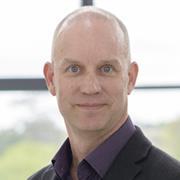Delving into the cultural value of coastlines
For many people, the coast is a place of tranquility where they can unwind, go for a walk or admire the scenery. The seaside has a special – almost mystical – power; it can inspire, fulfill and bolster. Particularly for city dwellers, coastlines can act as a place of sanctuary from the hustle and bustle of life. Understanding that power, however, is a different matter – and understanding the coastline has never been as important, as the climate crisis wreaks havoc on our planet’s natural resources.
It is for these reasons – and more – that four UCD researchers spent two years studying coastlines along the Irish Sea to better understand their cultural significance. The Cultural Value of Coastlines was a two-year project funded by the Irish Research Council. The interdisciplinary team behind the project published its first academic article in April 2019 and wrapped up their work in June 2019.
…the project looked at the cultural influences and impacts of ecosystem change on coasts
Led by Professor John Brannigan, Head of UCD School of English, Drama and Film, and Professor Tasman Crowe, Director of UCD Earth Institute, the project looked at the cultural influences and impacts of ecosystem change on coasts along the Irish Sea. They were joined by postdoctoral researchers Dr Fran Ryfield and Dr David Cabana.
“Researchers for a long time have really been focusing primarily on the more tangible sort of things that could be changed,” Professor Crowe explains. “But I think the cultural kind of services, the sense of well-being, the aesthetic appreciation of the landscape have been harder to get to grips with, so they’ve been less thoroughly studied.”
Crowe and Brannigan knew that an interdisciplinary approach was necessary if they wanted to gain a better understanding of the cultural significance of coastlines.
“Most interdisciplinary projects are spearheaded by one discipline that’s using the methods of another discipline quite instrumentally,” Brannigan says. “Whereas our project, from the very beginning, aimed to integrate the perspectives together and to really learn from each other throughout.”
The team decided to zone in on three coastal locations along the Irish Sea for their research: Dublin Bay, Strangford Lough in Northern Ireland and the Cumbria Coast in the North of England. They had field trips in each location, where they undertook on-site research.
Crowe and Brannigan knew that an interdisciplinary approach was necessary if they wanted to gain a better understanding of the cultural significance of coastlines.
“The primary method we were using was to engage with local communities, so local government, local councils, museums that were in the area, environmental organisations in the area, owners of amenities by the coast,” Brannigan says. “But then also to get in touch with writers, artists, local historians, people who are involved in local heritage, so that’s what we did in terms of advisory meetings and focus groups for the project.”
They also designed a survey and stopped people on beaches and asked them questions such as why they were there and what the value of the coast was to them. The survey was later rolled out online.
Those they surveyed were “remarkably enthusiastic,” Crowe says.
“People are happy to be listened to by people who are interested in listening to them, which we very much were. There were a lot of interesting points of view that I hadn’t ever really contemplated before. You never know quite what people would say, which was really worthwhile, and cements the value of doing it. You have to go out and talk to people to know what they’re thinking and feeling. You can’t really pre-judge what that’s going to be.”
The responses showed that people who live in coastal areas feel a sense of calm and a deep connection to the seaside.
“People slow down and relax a bit when they get to the sea,” Crowe says. “It gives people a sense of place and a sense of perspective.”
This sense of place and perspective is also exemplified in the artistic representations of coastal areas the team examined. Both Brannigan and Crowe point to the writings of James Joyce as being of particular interest.
“In Ulysses, there’s a chapter in which Stephen Dedalus is walking along Sandymount Strand and he’s constantly thinking about time,” Brannigan says. “He’s meditating on deep time, going back to geological time, and that puts his own life within a framework that makes him more contemplative, more tranquil, more humble about his own existence. That resonates with a lot of people who go to the coastline and have that feeling of watching the sea going in or out, and realising the enormity of the planet and the changes that are taking place on our planet at the moment.”
By looking at cultural representations of the seaside, the team was able to think about emotional and symbolic values attached to coastal areas in a new way.
“We found that literature and art was a really good way of thinking about those values,” Brannigan adds. “One of the things that we’re particularly interested in as an outcome of the project is, can you use the power of art, literature and storytelling to encourage people to care about the environment more?”
While the project has concluded, it should act as a jumping off point for other researchers who are interested in working in an interdisciplinary way – and who are interested in protecting the environment from the devastating effects of climate change.
By looking at cultural representations of the seaside, the team was able to think about emotional and symbolic values attached to coastal areas in a new way.
“Almost all environmental and sustainability challenges need more than one discipline to address them,” Crowe says. “There’s very often a technological or scientific aspect, but it’s going to need an economic and social perspective as well. We need to better understand how people are responding to environmental challenges and how they might respond to changes in policy, so for that we need social sciences and humanities analysis.”
The fundamental mission of the UCD Earth Institute, Crowe says, is to bring people together from different disciplines to enrich environmental research and enhance its impact.
“One of UCD’s greatest strengths is its size and diversity, but day-to-day, people tend to stick within their disciplines. I see the job of the Institute as being to provoke new conversations between those traditional disciplinary boundaries. The intellectual benefit is great – you come to think in new and different ways. It makes the University a more stimulating environment.”
Professor John Brannigan and Professor Tasman Crowe were in conversation with Patrick Kelleher (BA 2015, MA 2017), a freelance journalist.
Pictured are Prof Tasman Crowe, Dr David Cabana, Prof John Brannigan and Dr Frances Ryfield.

